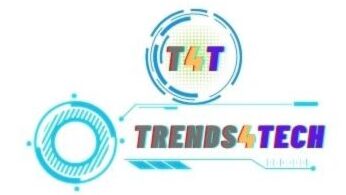Understanding Data Hoarding: Risks, Implications, and Best Practices
In an era where data is considered the new oil, organizations are collecting and storing unprecedented amounts of information. While having extensive data can be valuable, hoarding data indiscriminately can lead to numerous issues. This article delves into the concept of data hoarding, its risks, and best practices for managing data effectively.
What is Data Hoarding?
Data hoarding refers to the practice of collecting and retaining large amounts of data without a clear strategy for its use. Unlike strategic data collection, which involves gathering data with specific goals in mind, data hoarding is characterized by the accumulation of data for its own sake. This can include everything from customer information and transaction records to logs and historical data.
The Appeal of Data Hoarding
Several factors contribute to the tendency to hoard data:
- Fear of Missing Out (FOMO): Organizations often fear that deleting data could mean losing valuable insights that might be useful in the future.
- Storage Cost Decline: The decreasing cost of storage solutions makes it easier for organizations to justify keeping vast amounts of data.
- Big Data Analytics: The rise of big data analytics has led to the belief that more data equates to better insights, driving the compulsion to store everything.
Risks and Implications of Data Hoarding
Despite its perceived benefits, data hoarding can lead to several significant risks:
1. Increased Storage Costs
While the cost of storage has decreased, maintaining vast amounts of data can still be expensive. Over time, the expenses associated with data storage, backup and management can add up, impacting the organization’s budget.
2. Data Security and Privacy Concerns
Storing large volumes of data increases the risk of data breaches and cyberattacks. Sensitive information, if not properly protected, can be compromised, leading to financial and reputational damage.
3. Regulatory Compliance Issues
Data protection regulations, such as GDPR and CCPA, require organizations to manage and protect personal data responsibly. Hoarding data without proper governance can result in non-compliance, leading to hefty fines and legal repercussions.
4. Reduced Data Quality
Accumulating excessive data can make it difficult to maintain data quality. Duplicate, outdated, or irrelevant data can clutter databases, making it challenging to extract meaningful insights.
5. Performance Degradation
Storing and processing large volumes of data can strain IT systems, leading to performance issues. This can affect the efficiency of data retrieval and analysis processes.
Best Practices to Combat Data Hoarding
To mitigate the risks associated with data hoarding, organizations should adopt best practices for data management:
1. Develop a Data Retention Policy
A data retention policy outlines how long data should be kept and when it should be deleted. This policy should be based on legal, regulatory, and business requirements. Regularly review and update the policy to ensure it aligns with current needs and regulations.
2. Classify and Prioritize Data
Not all data is equally valuable. Classify data based on its importance and relevance to business objectives. Prioritize the storage and management of critical data while considering the deletion of less valuable information.
3. Implement Data Governance
Data governance involves establishing policies and procedures for managing data throughout its lifecycle. This includes data quality management, access controls, and compliance monitoring. Effective data governance ensures that data is accurate, secure, and compliant with regulations.
4. Utilize Data Archiving Solutions
Archiving involves moving infrequently accessed data to a separate storage system, freeing up primary storage space. Archived data can be retrieved when needed, reducing the burden on primary storage systems and improving performance.
5. Leverage Data Analytics
Use data analytics to identify and eliminate redundant or irrelevant data. Analytics tools can help uncover patterns and trends, guiding data retention decisions and ensuring that only valuable data is kept.
6. Educate Employees
Ensure that employees understand the importance of data management and the risks of data hoarding. Provide training on data retention policies, data governance practices, and the proper handling of sensitive information.
7. Regularly Review and Clean Data
Conduct regular data audits to assess the quality and relevance of stored data. Implement data cleansing processes to remove duplicates, outdated information and inaccuracies. This helps maintain a high standard of data quality.
Data hoarding may seem like a prudent approach in the age of big data, but it carries significant risks and challenges. By developing a clear data retention policy, classifying and prioritizing data, implementing robust data governance, and leveraging data analytics, organizations can manage their data more effectively. These best practices not only mitigate the risks associated with data hoarding but also enhance the value of the data that organizations choose to retain. In a world where data is a critical asset, thoughtful data management is essential for long-term success.

